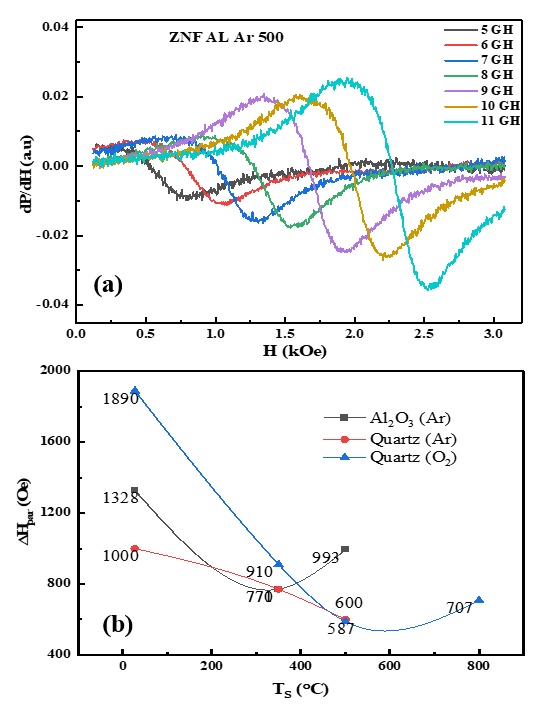Speaker
Description
This study investigates the magnetic properties of ZnFe$_2$O$_4$ thin films, emphasizing the impact of growth conditions on their ferromagnetic resonance (FMR) spectra. Utilizing X-ray diffraction (XRD) and Raman spectroscopy, the films were analysed under different substrates, growth temperatures, and gas ambient. Key findings highlight variations in change in FMR line width, saturation magnetization, suggesting a significant influence of growth environments on magnetic behaviour. FMR spectroscopy study has been carried out at room temperature using a broad-band FMR set-up, with an excitation frequency varying from 3 to 18 GHz. For clarity, we have chosen to present data for specific GHz ranges. From the measurements obtained, we calculated the line width ($\Delta H$) and resonance field ($H_r$). It is important to highlight that the FMR signal exhibited greater strength in the argon environment in comparison with the oxygen environment. FMR spectroscopy provides valuable insights into crucial aspects like magnetic anisotropy, magnetic damping, and exchange interactions [1]. These insights are crucial for the development and optimization of spintronic devices [2], providing a deeper understanding of material properties under diverse conditions.

Fig.1 a) FMR spectra of Zinc-ferrite films deposited on Al$_2$O$_3$ substrate at 500 $^\circ$C in an argon environment, and b) The parallel line width ($\Delta H_{par}$) plotted against various $T_S$ (substrate temperature) and substrate types.
References
[1] S. M. Yakout, “Spintronics: Future Technology for New Data Storage and Communication Devices,” Journal of Superconductivity and Novel Magnetism, vol. 33, no. 9. Springer Science and Business Media LLC, pp. 2557–2580, May 31, 2020. doi: 10.1007/s10948-020-05545-8.
[2] Y. Wang, R. Ramaswamy, and H. Yang, “FMR-related phenomena in spintronic devices,” Journal of Physics D: Applied Physics, vol. 51, no. 27. IOP Publishing, p. 273002, Jun. 20, 2018. doi: 10.1088/1361-6463/aac7b5.

